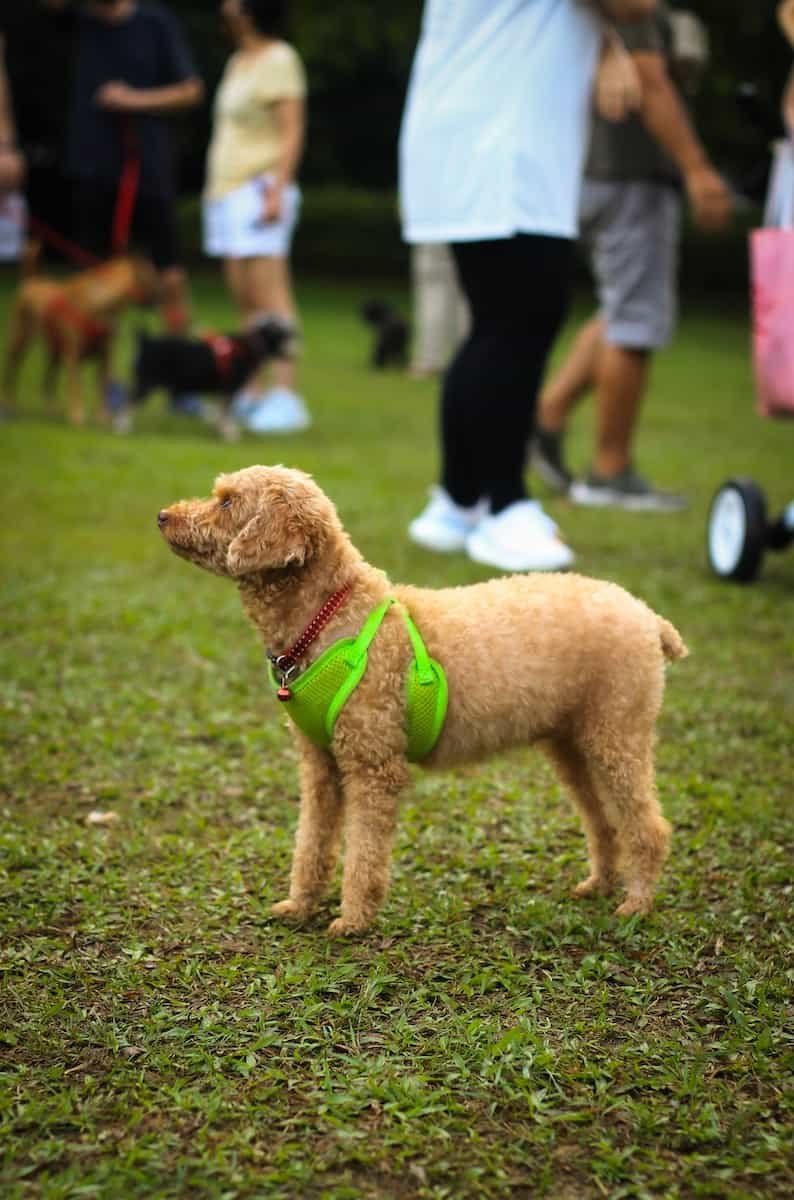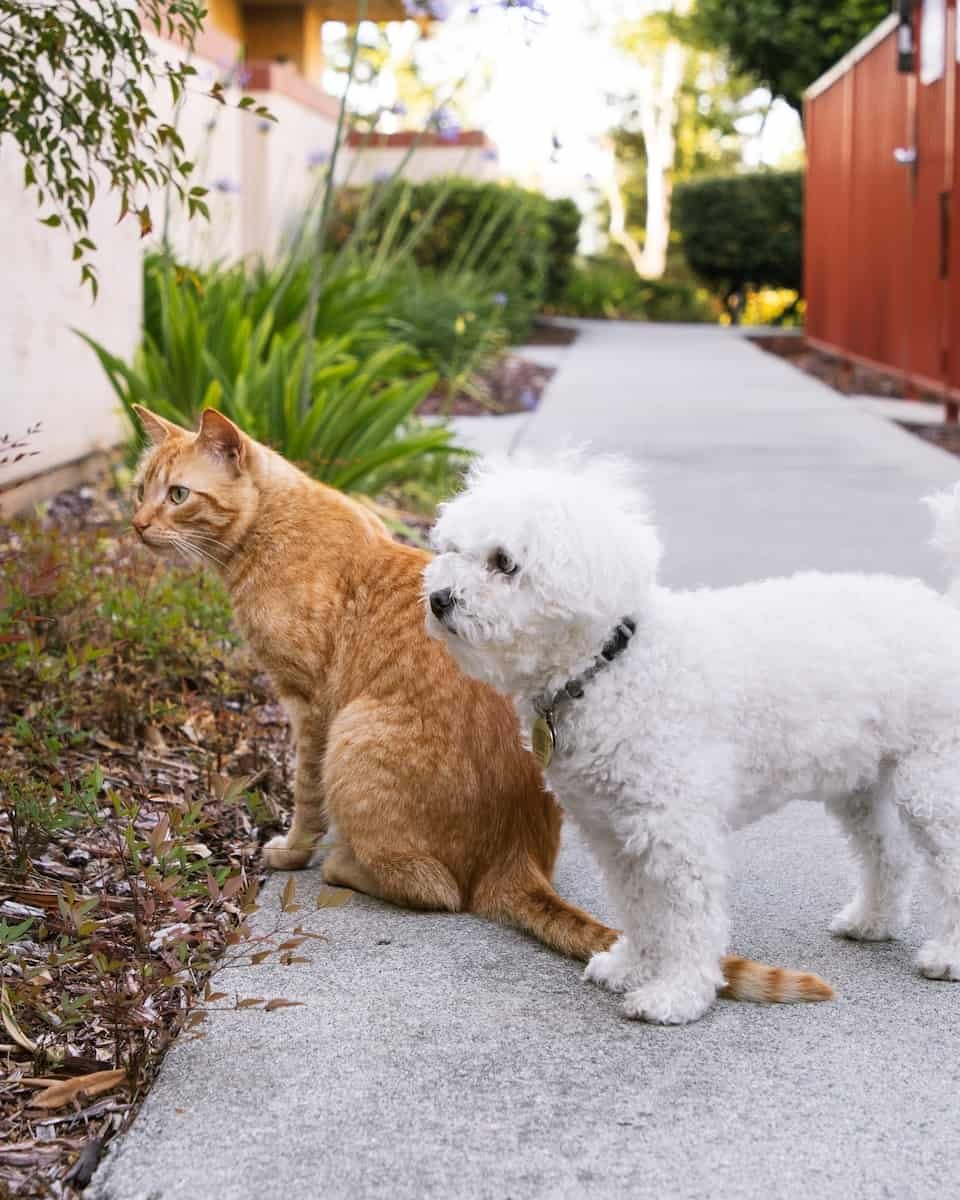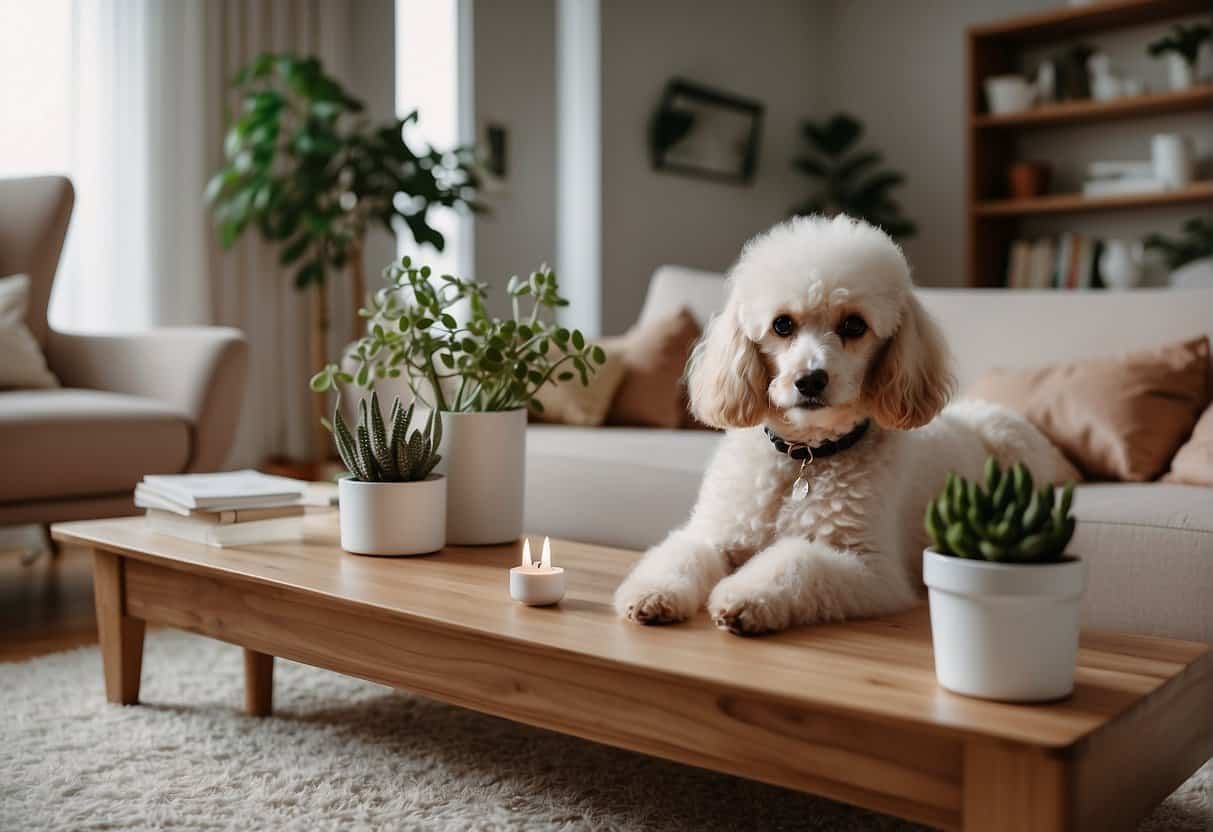
Introducing a new poodle into a household with existing pets can be a tricky process. It’s important to take the time to properly introduce the new pup to avoid any potential conflicts or stress for both the animals and their owners. With a bit of patience and preparation, it’s possible to create a harmonious multi-pet household.
The first step in introducing a new poodle to existing pets is to do your research. Every animal has its own personality and temperament, and it’s important to understand how your existing pets may react to a new addition. It’s also important to consider the age and breed of both the new poodle and the existing pets, as this can also impact the introduction process.
Once you’ve done your research, it’s time to start the introduction process. It’s important to take things slow and allow each animal to get to know each other at their own pace. With patience and positive reinforcement, you can help your pets build a strong and loving bond.
About This Guide
- Real Experience: Written by poodle enthusiasts with years of hands-on experience caring for and training poodles.
- Expert Reviewed: Content verified by certified dog trainers and veterinary professionals.
- Fact-Checked: Information sourced from the AKC, veterinary journals, and breed specialists.
- Last Updated: November 2025
What to Consider Before Introductions
Before introducing a new poodle to your home with existing pets, it’s important to take some steps to prepare both the recent addition and your other pets. Introducing new pets can bring excitement, but it can also bring anxiety and potentially territorial behavior. By preparing your other pets for the new poodle and preparing the new poodle for introduction, you can increase the likelihood of successful introductions and positive relationships between all of your furry friends.
Preparing Your Other Pets for the New Poodle
Bringing a new dog into your home can be an exciting but also stressful time for your current pets. Preparing them for the new poodle is crucial to ensuring a smooth transition and a positive experience for everyone.
First, start by introducing the scents of the new dog to your current pets. Bring in toys or blankets from the new dog’s living space and let your other pets smell and become accustomed to the new scent. This can help your current pets adjust to the new dog before any direct interaction occurs.
Next, start introducing your pets through visual barriers, like a baby gate, so they can see and smell each other with no physical contact. This will allow them to become more familiar with each other’s scents and body language without the added stress of physical interaction.
It’s important to ensure each pet has their own separate living spaces, like designated beds or crates, so they can retreat to a safe and familiar place if needed. This will help prevent any territorial behavior and avoid any potential conflict.
Supervision is crucial during the initial interaction period between your current pets and the new poodle. Monitor their interactions closely for any signs of stress or aggression. If you notice any concerning behavior, it’s important to separate them and take a step back in the introduction process.
It’s also important to keep their meal times separate. Begin feeding them in separate areas and never let them eat from the same bowl. This will help prevent any jealousy or aggression towards each other around food.
Last, set aside someone-on-one time for your current pets to make sure they don’t feel ignored after the new poodle. This will help them adjust to the changes and continue building a positive relationship with you.
By utilizing these steps, you can help your current pets become comfortable with the new poodle and ensure a safe and positive introduction. Remember to take things slow and give your pets plenty of time to adjust to the new dynamics.
Preparing the New Poodle for Introduction
Just like preparing your current pets for a new poodle, it’s equally important to prepare the new dog for their first meeting with your existing pets. Here are some steps you can take to ensure a smooth and successful introduction:
1. Tire out the Poodle before the First Meeting
Start by taking the new poodle on a walk or run before the first meeting. This will help tire out the dog and reduce their arousal level, making them more calm during the introduction. Make sure to walk the poodle and your other dogs separately to prevent any accidental interaction before the introduction process.
2. Keep Possessions Separate
To prevent any territorial issues, keep the new poodle’s possessions, such as toys and beds, separate from your other pet’s items. This will avoid any potential conflict over prized possessions and help establish individual territories for each pet.
3. Consider Calming Pheromone Sprays
Consider using pheromone sprays, which can help calm nervous animals and create a more relaxing environment for the introduction. These sprays mimic the natural pheromones found in dogs and can help reduce stress during the initial interactions.
4. Avoid areas that may trigger territorial behavior
Be cautious about where you introduce the new poodle, avoiding areas where your other pets may be more sensitive and prone to territorial behavior. For example, it’s best to keep the new poodle away from any spots where other pets may guard, such as favorite sleeping spots or feeding areas.
By following these steps, you can help prepare your new poodle for a successful introduction to your current pets. Remember that first impressions matter, and taking the time to properly prepare all pets involved can help create positive relationships and a healthy dynamic in your household.
The Meeting
The initial meeting between a new poodle and your existing pets can be an exciting time, but it’s important to approach it with careful consideration and planning.
To ensure the safety and wellness of all animals involved, it’s crucial to set clear goals and engage in preliminary interactions prior to bringing them together in your home. Starting with an outdoor walk can be an effective way to ease tension and introduce the dogs in a neutral environment. Read on to learn more about how to approach these crucial first steps.
For the walk, it’s important to be vigilant and pay attention to the body language of all parties involved. Identify any signs of aggressive behavior such as raised hackles, bared teeth, or growling. If these behaviors are observed, it’s best to keep the dogs apart until they can be brought into a controlled environment.
Once you’re ready for an indoor introduction, it ‘s best to keep the surroundings calm and distraction-free. Try to limit the number of people in the room and remove any items that might spark territorial behavior, such as toys or food bowls.
Finally, it’s important to remember that introducing a new poodle to existing pets should be done slowly and gradually. Allow ample time for the dogs to get comfortable with each other, slowly increasing their exposure to one another over several weeks.
Using these tips, you can help ensure a successful and safe introduction between your new poodle and your existing pets.
What Should Your Goals Be?
Before introducing a new poodle to your existing pets, it’s important to have clear goals in mind. A successful introduction requires a structured approach that considers the individual needs and personalities of each animal involved. The goal is to establish a long-term, healthy relationship between your pets.
A key component of a successful introduction is allowing each animal to get used to each other at their own pace. Patience is crucial during this process, and it’s important not to rush the interactions. Introducing the pets in a neutral area can help reduce territorial behavior and make the introduction less stressful for everyone involved.
Feeding your pets in separate areas is also important during these initial stages. This will help prevent resource guarding and competition over food, which can lead to negative interactions. Spending quality time with each pet separately can also help build positive associations and create a foundation for a healthy relationship between all of your pets.
If your pets show signs of wanting to interact positively, such as sniffing or playful behavior, it’s beneficial to allow them to do so under close supervision. However, it’s important to remember that not all pets will want to interact right away, and forcing them to do so can do more harm than good.
In order to achieve your goals of introducing your pets successfully, it’s important to supervise them at all times. This means being present and alert during interactions, and creating a safe space for each animal to retreat to if needed. By providing a structured approach and taking the time to consider the individual needs of each animal, you can lay the foundation for a long-term, positive relationship between all of your pets.
Preliminary Meeting Outside of Home
Before introducing your new poodle to your existing pets, it’s important to have a preliminary meeting outside of the home. This meeting provides a neutral setting for the dogs to establish a relationship without feeling territorial. A preliminary meeting can be an essential part of the introduction process, and can set the stage for a successful relationship between all of your pets.
When choosing the location for the preliminary meeting, look for an open area like a park with interesting sights and sounds that can distract the dogs. These distractions can help the dog’s focus on something other than each other, which can ease any tension and promote positive interactions.
It’s important to bring the dogs separately to the meeting and observe them as they greet each other. Keeping the leashes loose and allowing the dogs to interact naturally will help minimize any feelings of restraint or fear. Minimizing the amount of intervention from the owners during the initial meeting can help the dogs establish a connection on their own.
After the initial greeting, take the dogs for a short walk together. This can help gauge whether the dogs are ready to meet on home turf. Observe their behavior during the walk and notice if there are any signs of aggression or discomfort. Based on their behavior during the walk, you can determine if the dogs are ready to take the next step and meet in the home.
Overall, a preliminary meeting can be a valuable tool in promoting a healthy relationship between your pets. By providing a neutral setting for your pets to meet, you can help minimize territorial behavior and promote positive interactions. Remember to keep the leashes loose during the meeting and observe the dogs carefully to ensure a smooth introduction process.
Start with walking outdoors
One effective way to introduce your new poodle to your existing pets is by starting with walking outdoors. It’s important to begin on neutral territory that provides ample space for your dogs, like a park or an open field. This will help minimize any territorial behavior, as both dogs will be on equal footing.
When starting the walk, keep the two dogs on opposite sides of your space and begin walking in the same direction. Give each dog a treat when they focus on anything but each other. This will help establish positive associations between the dogs and make them more comfortable around each other.
Gradually decrease the distance between the two dogs on subsequent walks. Once they’re walking side by side without focusing too much on each other, allow the dogs to circle and sniff each other for a few seconds during each meeting. This will help promote positive social behavior and allow the dogs to establish a familiar scent, which can create a sense of comfort and security.
Remember to take it slow and allow your dogs plenty of time to acclimate to each other. Introducing dogs too quickly can result in conflicts or aggression. By starting with walks on neutral territory and gradually decreasing the distance between them, you can help establish positive relationships with your pets. Don’t forget the treats, as they can be a valuable tool in encouraging positive behavior and association.
Arriving home with your new dog
Arriving home with your new poodle can be an exciting time, but it’s important to make sure that your house is prepared for the new addition. Before bringing your new pup home, make sure that your house is in order. This includes removing any items that may be hazardous to your dog, such as loose electrical cords or toxic plants.
You’ll want to identify any areas of the house that may be off-limits to your dog and make sure they’re appropriately secured. Once your house is ready, it’s important to look for signs of stress and help your new dog adjust to their new surroundings.
Is the House in Order?
Before introducing your new poodle to your existing pets, it’s important to make sure your house is in order. This means creating separate safe spaces for each dog to eat, sleep, and play. Make sure that each dog has a designated area where they can retreat to if they feel overwhelmed or threatened.
In addition, it’s important to keep food, toys, and prized possessions out of reach to avoid any territorial behavior. Make sure that there are multiple beds and water bowls throughout the house to accommodate each dog’s needs.
Prior to the introduction, attach leashes to both dogs and make sure that there is a physical barrier, such as a baby gate or closed door, to separate them if necessary. Keep the leashes loose to allow the dogs to interact naturally, but also be prepared to tighten the leash or physically separate the dogs if you sense any signs of aggression or tension.
By preparing the house in this way, you’re creating a safe and comfortable environment for both your new poodle and your other pets. This will help facilitate a successful introduction and encourage positive relationships between all of your furry companions.
If you’re unsure about the introduction process, consider consulting with an animal behaviorist or an animal behavior clinic to get expert advice on how to approach the situation based on the specific aspects of canine behavior and your pets’ individual communication skills. Remember, impressions matter and a positive experience at the beginning can lead to a healthy and lasting relationship between your pets.
Signs of Stress and How to Help with the change
While bringing a new poodle into your home can be an exciting time for everyone, it’s important to remember that introducing a new pet to your existing household can be a stressful experience for both the new poodle and your other pets. To ensure a smooth transition, it’s important to watch for signs of stress in your dogs.
Signs of stress in dogs can include trembling, pacing, panting, yawning, lip-licking, and avoidance behaviors. It’s important to monitor your pets closely during the introduction process to ensure that they are adjusting well to each other. If you notice any of these signs of stress, it’s important to intervene and respond appropriately to help your dogs feel more comfortable.
During the first few weeks after the introduction, it’s important to keep things calm and avoid having too many visitors in the house. This will help to minimize stress and keep the energy levels as low as possible. Consider using frequent “play pauses” to manage energy levels, as over-excitement and excessive stimulation can lead to clashes between your dogs.
Always monitor your dog’s body language regularly during the introduction process. Be prepared to intervene or distract them if needed to prevent over-stimulation. Providing your dogs with separate crates or safe zones where they can retreat if they feel overwhelmed can also help to reduce stress and anxiety.
By watching for signs of stress, using play pauses and managing energy levels, and providing your dogs with separate safe zones, you can help your pets adjust to each other more successfully. With patience, persistence, and an understanding of canine body language, you can help your pets develop healthy and positive relationships with each other.



